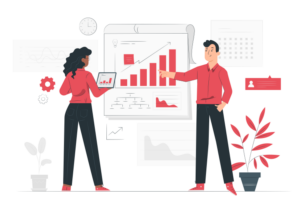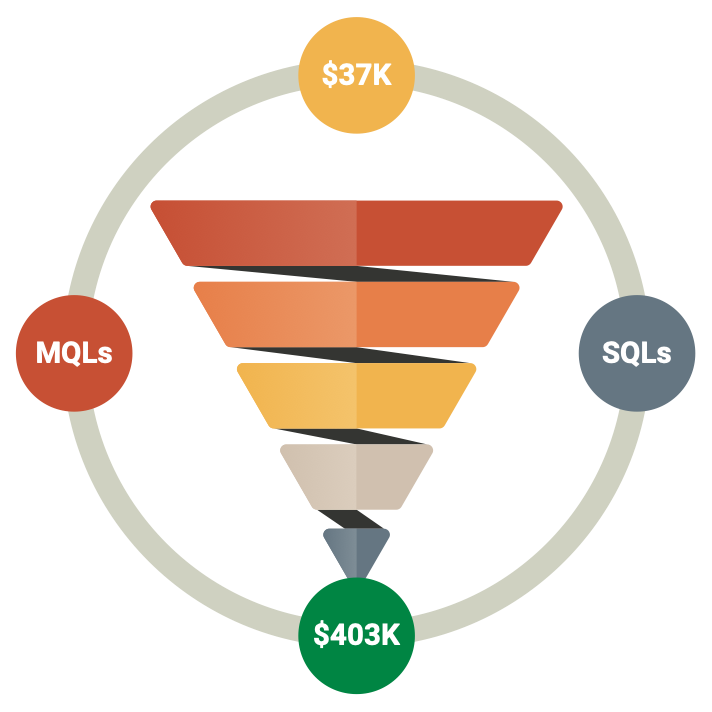Finance and accounting departments have lots of different data to manage—vendors, employees, customers, transactions, and investments, to name a few.
This data often exists in different formats and silos, making it difficult and time-consuming to get a holistic view of the organization’s financial picture. And at the enterprise scale, this problem is magnified.
Organizations are turning to financial data automation to help them overcome the challenges of manual data management. These workflows include a range of technologies and processes that can streamline data management, from accounting software that consolidates disparate financial data sources to robotic process automation (RPA) that automates manual tasks like data entry.
In this post, we’ll explore some examples of financial data automation in action and share best practices for getting started with these workflows.
What Is Financial Data Automation?
Picture this: You run the finance department at a large enterprise. You look over thousands of employees in different departments, locations, and countries. And you look over thousands more numbers.
You need to track vendor invoices, employee expenses, customer payments, transaction data, and investment information—all in real-time. And you need to do it accurately and efficiently to make sound financial decisions for the business.
By using a combination of software and processes, organizations can automatically collect, clean, and analyze their financial data—freeing up time and resources to focus on more strategic tasks.
With financial automation workflows in place, you can:
- Automatically collect data from different systems and silos
- Normalize and cleanse data for consistent reporting
- Generate real-time financial reports (e.g., P&L, balance sheet, cash flow statement)
- Access a centralized view of the organization’s financial picture
- Visualize your data with dashboards and graphs
And since these workflows are automated and connected, they can be run with little to no human intervention—freeing up your team’s time to focus on higher-level tasks.
What Types of Financial Reporting Can You Automate?
Here’s a quick overview of some of the most common types of financial reports that can be automated:
- Annual and Quarterly Financial Statements: Balance sheet, income statement, cash flow statement
- Management Reports: Profit and loss statement, sales report, customer report
- Financial Ratios: Return on investment, gross margin, operating margin, return on assets
- Budget vs. Actuals: Comparing budgeted amounts to actual amounts spent
- Consolidation Reports: Combining financial data from multiple subsidiaries or business units
- Financial Forecasting: Projecting future revenue, expenses, and cash flow
- Year-End Close: Automating the process of closing the books at the end of the fiscal year
- Post-Audit Reclassification: Automatically reclassifying transactions after an audit
In some cases, you may need to generate custom reports that are specific to your business. This is often the case for businesses in regulated industries like healthcare, banking, and insurance.
For example, a healthcare organization may need to generate reports that track patient health outcomes, or a bank may need to generate reports on loan defaults.
Fortunately, most financial automation software is highly configurable and can be adapted to fit the needs of any organization. There are also plenty of niche-specific financial automation solutions on the market.
Why Is Automation Important In Finance?
Automation plays a critical role in finance because it helps organizations overcome the challenges of manual data management.
Source: PwC Finance Effectiveness Benchmark Study
A PwC analysis found that most financial professionals spend 53% of their time gathering data and top-performing teams spend up to 73% of their time analyzing it. And when these processes are completed at the human level, it can lead to inaccurate data and reporting—both of which have a ripple effect on decision-making.
Financial automation frees up employees’ time, but it also changes how they work entirely. Here are three ideas for organizations using automated financial reporting:
- Empower your corporate finance teams: Financial analysts, account managers, and other core finance team members can create identify challenges and create their own automations.
- Make productivity easy: Modernize the workplace by automating workflows and using digital social hubs and chat tools.
- Break down organizational silos: Between finance, accounting, HR, and executives, there are a lot of stakeholders in a company’s financial data. Automation breaks down these silos by providing a centralized view of the organization’s finances.
A survey by Adaptive Insights revealed that 46% of finance teams aren’t aligned with other departments on key metrics. When finance professionals benefit from automation at both the individual and team level, they can play a more strategic role in the organization—leading to better decision-making across the board.
How Does Financial Data Automation Work?
Financial automation typically includes three core components: a data management platform, an analytics engine, and a reporting tool. The basic chronological flow of financial automation is as follows:
- Data is collected from various sources, including accounting software, ERP systems, and financial market data providers.
- This data is cleansed, normalized, and transformed into a format that can be used for reporting and analysis.
- The data is stored in a centralized repository, often in a cloud-based data warehouse like Snowflake.
- Reports and dashboards are generated from the data warehouse and delivered to users in the format of their choice (PDF, Excel, web-based, etc.).
- Users can interact with the reports and dashboards to drill down into the data, slice and dice it, and generate new insights.
There are a few different technologies and processes that make up financial data automation workflows. Here are some of the most common:
Accounting Software
This software consolidates disparate financial data sources into one platform. This gives finance professionals a single view of the organization’s finances and makes it easier to produce accurate reports.
Most of these platforms also offer services like financial statement automation, P&L calculation, and expense management
Examples include:
- SAP
- Oracle
- QuickBooks
- Xero
- Wave
Data Integration Tools
These tools help organizations collect data from different software applications and databases. This is important because it allows businesses to automate the data entry process and ensure that data is accurate.
For example, an organization that recieves invoices and revenue from multiple sources (e.g., invoicing software, online payment processing, in-store sales, affiliate partnerships) can use a data integration tool to automatically consolidate this information into their accounting software.
Some popular data integration tools include:
- Informatica
- Talend
- Pentaho
- Jitterbit
- MuleSoft
Data Cleansing Tools
Data cleansing is the process of identifying and correcting inaccuracies in data. This is important because it ensures that reports are accurate and consistent.
Data cleansing tools help organizations automate the data cleansing process by identifying errors and correcting them automatically.
Some popular data cleansing tools include:
- OpenRefine
- Trifacta Wrangler
- Drake
- Dataiku
- WinPure
- IBM Infosphere Quality Stage
Business Use Cases for Automated Financial Reporting
Whether you run a small ecommerce store or a 1,000-employee enterprise, there are many ways that you can benefit from automated financial reporting. Here are a few examples:
Expense Management
Organizations can use automation to streamline the expense management process. This includes tasks like categorizing expenses, verifying receipts, and sending reimbursements.
FinTech companies like Brex and Ramp offer expense management and spend reporting from within their platforms, enabling users to automatically categorize spend and sync it with your accounting software.
Accounts Receivable and Accounts Payable
When you manage payables and receivables by hand, it’s easy to make mistakes that can cause big problems, like making your vendors wait for their payments, not having enough money to cover expenses, or upsetting employees because they have to wait for their invoices to be processed.
With the help of automation, you can:
- Auto-generate invoices, then capture data from them with intelligent document processing.
- Monitor vendor data and transactions to identify issues early and avoid late payments.
- Cross-reference invoices against purchase orders.
- Forward financial documents to the appropriate people for approval.
- Automatically reconcile balance sheet accounts.
Forecasting and Budgeting
By automating financial data collection and analysis, you can get real-time insights into your organization’s financial health. This makes it easier to predict cash flow, identify trends, and decide where to allocate resources.
You can also use automation to:
- Build “what-if” scenarios to test the impact of different decisions.
- Create budgets and track performance against them.
- Generate financial reports on demand.
With visual dashboards and digestible analytics, the entire organization can stay on the same page about the budget and financial outlook.
Intercompany Reconciliations
Over 500,000 mergers and acquisitions took place globally since 2010, with over 63,000 in 2021 alone.
Source: Statista: Number of merger and acquisition (M&A) transactions worldwide from 2010 to 2021
For a successful M&A, transparent accounting is essential to ensure that the combined company runs smoothly and efficiently.
But the process involves more than just combining two accounting departments— it also means reconciling intercompany transactions, which involves manual tasks like data entry, matching records, and extraction.
With the right automation workflows in place, you can:
- Automatically match records and flag discrepancies.
- Extract data from multiple sources and consolidate it into a single platform.
- Generate real-time reports on intercompany transactions.
- Ensure compliance with Sarbanes-Oxley (SOX), IFRS, and GAAP regulations.
Reporting
Finance departments file reports on everything from revenue and expenses to balance sheets and cash flow statements. Quarterly, annual, and ad-hoc reports must be accurate and timely.
Timely, accurate reporting indicates an organization’s market health and performance. Automating the report generation process enables finance departments to focus on analyzing data and making decisions, rather than getting bogged down in manual tasks.
In the example above, financial data was pulled from Snowflake, cleansed, and built into a digestible format.
With the right tools, finance teams can:
- Gather business data from data warehouses and ERP systems.
- Transform and cleanse data with ELT processes.
- Build reports and visualizations with drag-and-drop tools, then distribute them to stakeholders.
- Schedule reports to be generated and delivered automatically.
Best Practices for Automating Financial Reporting
Now that you know some of the ways that you can use automation for financial reporting, here are a few best practices to keep in mind:
1. Make sure you have the right data.
To generate accurate reports, you need to start with high-quality data. This means cleansing and normalizing data from multiple sources before it’s used in reporting.
Enterprises will likely use a data warehouse like Snowflake to keep all of their data, then use ELT tools to transform it into a format that can be used for reporting.
2. Use the right tools for the job.
There are many different types of financial reports, so it’s important to use the right tool for each one. For example, you might use a BI tool like Tableau or Power BI to create interactive visualizations, or a financial planning tool like Adaptive Insights to generate forecasting reports.
3. Automate the repetitive tasks first.
Repetitive tasks like data entry and report generation can be automated with the help of RPA software like UiPath or Blue Prism. This frees up time for finance professionals to focus on more strategic tasks.
4. Schedule reports to be delivered automatically.
With the help of a tool like Zapier, you can schedule reports to be generated and delivered automatically— whether that’s daily, weekly, or monthly. This ensures that stakeholders always have the latest information, without having to request it manually.
5. Continuously monitor your data and reports.
Even with automation in place, it’s important to continuously monitor your data and reports for accuracy. This way, you can catch errors and ensure that your reports are always up-to-date.
Unify All Your Data On the Cloud With DataLakeHouse
For simple processes like expense management and corporate finance reporting, your business apps will do the work for you.
But what about your purchase, invoice, purchase order, and sales data?
The truth is that financial data is spread out across multiple departments, systems, and locations, making it difficult to get a single source of truth for your financial data.
DataLakeHouse is the cloud-based data platform that brings all of your financial data together in one place. With DataLakeHouse, you can:
- Bring your data from dozens of data sources on-premise or in the cloud.
- Unify your data with our built-in ELT processes.
- Use our industry-specific conformed data models for financial services.
- Gain quick self-service access to charts, pivot tables, and more.
- Use our proprietary algorithms to find financial patterns and insights even if you aren’t a data scientist.



